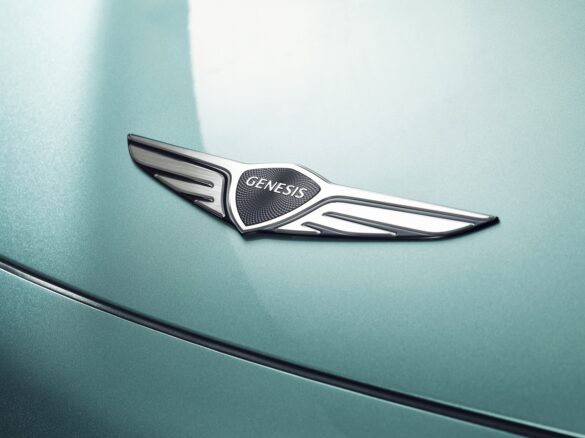By Greta Chiocchetti
When asked during a recent online presentation at Academy of Art University about the one thing he wished new hires to his team knew, Hyundai/Genesis Director of Design Operations Hans Lapine didn’t hesitate to point out the importance of effective communication.
“Communication skills, especially these days where we’re all working from home offices and struggling to get our message across,” Lapine emphasized. “It just shows how important the digital tools are these days, but communication has been an ongoing problem for decades. People need to communicate their ideas better, and digital tools are the perfect way to do this, so hone them as much as you can.”
Along with colleagues from his Design Operations team out of Irvine—Senior Digital Modeling Manager Richard Gillespie, Visualization Manager David Nikel, Chief of Staff Finance Aytug Yildrim, and Computer Aided Styling (CAS) Manager Greg Woog—Lapine offered students from the School of Industrial Design (IND) an inside look into careers available at Hyundai and shared some tips and tricks for aspiring designers looking to get their start.
Gillespie led an inspiring presentation about the company’s innovative, forward-looking vision and how it is harnessing technology to streamline design processes, including utilizing 3-D sketching and modeling in virtual reality realms.
“Ever since COVID hit, everything has been changing rapidly and expanding in terms of what we’re looking for now in new hires,” explained Gillespie. He noted new processes within the company in response to emerging technologies, including virtual reality modeling, AI design/styling, UX/UI, simulation, and visual programming. “We have to be flexible and adaptable and able to work with these new tools as they become available.”
After an exciting look at Hyundai’s vision for the future of mobility, IND students were able to ask the designers their most burning industry questions. Noting the company’s pivot to new market focuses—robotics and air mobility—one IND student wanted to know if the Design Operations team would expect to see those trends reflected in student portfolios.
In gallery view over Zoom, each designer nodded their head ‘yes’ enthusiastically.
“I see us expanding to these ecosystems of mobility, from the last mile to being up in the air,” said Gillespie. “So, along with flexibility in terms of the tools that you’re using, it’s also important to be flexible with what you’re designing.”
Later, the Hyundai team was asked if they were looking to bring on traditional modelers or those with ‘hybrid’ experience—both digital and physical—Lapine explained that it was best to fuse a traditional approach with the digital tools available.
“We prefer to hire hybrid modelers. All of our clay staff is fully trained in Alias—we expect them to use Alias as a tool—not as a religion, but it’s a tool in the toolbox,” explained Lapine. “We are expanding our technologies and going into VR … we’re going further, further… but we have to keep our toolbox complete.”
Another student inquired about what kinds of educational opportunities the company offered or if they would be expected to teach themselves along the way.
“That’s another great thing about working here—the educational opportunities that are provided as you go,” said Gillespie. “For us to stay competitive, our staff has to stay current with the best tools to make the design happen as quickly as possible, so they definitely make sure we’re up to speed with the rest of the industry.”
“We always monitor the latest and greatest—and evaluate it to see if it’s going to be a new tool that we need,” added Woog. “And every year, at least, we’re training on something new. We also keep track of who’s been trained on what so no one gets left out.”
When asked how much creative freedom a junior designer could expect, Lapine chuckled and said, “None.”
“That is not true,” interjected Woog, after the audience enjoyed a brief laugh. “And I say that because we’ve had many young designers come in, and to see them grow, and to see how respected their work is, is very heartening. We’re very open to that when it comes to young designers—it’s expected actually.”
David Nikel, a visualization manager at Hyundai, interjected. “We’ve had interns that came in and, in their first year, had a show car at the Detroit Auto Show,” he said. “It’s wide open.”
“One of the first interns I had, actually—we thought we were going to teach her a lot, but she came in and was so well versed in everything that she ended up being an integral part of the team working on the GV80 show car,” said Gillespie. “She did quite a bit of work on the interior development, so it’s really up to the person’s ability and their will to find a niche for themselves.”
Yildrim added that it’s a matter of mindset.
“I think it’s confidence, too,” said Yildrim. “You come in from school, you have the foundation, you know what to do, and you come into a professional environment, and you have leadership and management that expect you to speak up and be confident and perform on a high level and ask questions. Don’t hold back—be confident, be there.”
